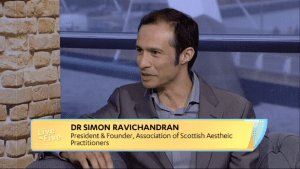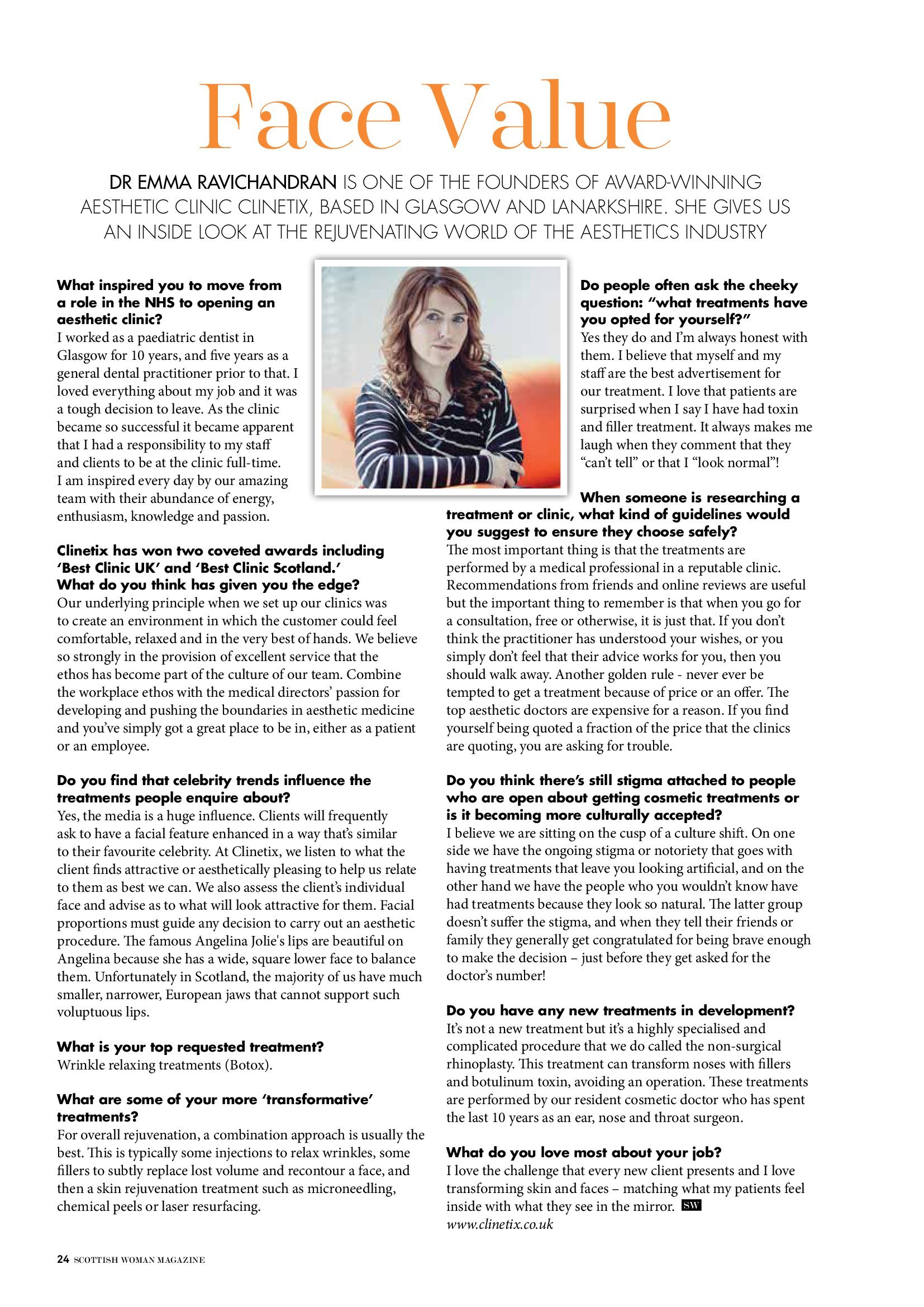With increasing numbers of the the general public seeking aesthetic medical treatments such as anti-wrinkle injections and Dermal Fillers, we are seeing a large increase in the number of aesthetic practitioners providing their services in Scotland. Whilst this may be seen as a good thing in terms of the choice now available to the public, most healthcare professionals feel that the current situation is a disaster waiting to happen.
The problem is that there is little or no regulation of the aesthetic medical industry in the UK. It was probably expected that there would never be a situation where a person may have a medical treatment outside of a clinic environment, performed by a person with little or no qualification or training. This is however the situation we now find ourselves in.
The lack of regulation and control has made it easy for unqualified individuals to access basic training and start to provide risk prone procedures in their own houses, in beauty salons, hairdressers and in some reported cases, in car parks and in toilets in nightclubs!
The public need to be made aware that these medical procedures carry risk. That risk may be infection, allergic reactions, and in some cases tissue damage and necrosis leading to permanent scarring and disfigurement. It is also now known that permanent blindness may occur as a result of treatment. The way to mitigate these risks is to have the treatment performed in a clinical environment that is hygienic and with appropriate safety measures in place and available to be used if required.
The chance of an adverse outcome is also considerably less when the treatments are performed by experienced and medically trained professionals.
We are pleased that the Scottish government is the first in the UK to announce that it will start to introduce a regulatory framework to ensure patient safety and promote and maintain high standards. The regulations are to be implemented over a three year period starting in April 2016.
The first stage of the process involves the regulation of independent clinics. Although we welcome the process and feel that accreditation of the clinics themselves is of importance we also think this is a little disingenuous as the bulk of the poor practice happens aside from the independent clinics. We feel that this approach has the potential to damage the practices that already try to maintain high standards whilst at the same time allowing unqualified, unscrupulous and dangerous practice to continue in non-clinical environments.
The second stage of the process will look at certain high risk procedures, and specifically mentions dermal fillers, and specifically dermal fillers being done in clinics provided by other health practitioners. In the detail of the report this is described as beauticians, hairdressers or similar therapists. If this is the case then again this seems like a rather pointless exercise, as although I am aware that there are non-medically trained people injecting dermal fillers in Scotland, I can’t think of a single medical aesthetic clinic premises that allows non-medical staff to perform the treatments. So exactly what this arm of the regulatory framework will achieve is not entirely certain, although some form of accreditation for beauticians with specialist training who perform treatments such as IPL, Laser, chemical peels etc would certainly be of benefit, as these are “risk prone” procedures and the training and supervision of anyone performing these should be standardised.
The third and final phase will “seek to develop a system of regulation for other groups of practitioners” By “other” I understand this to mean the practitioners who are not involved in the first two phases. That would be then people who are not medically trained and people who are not working in a Clinic environment. So this is in essence the group of people who are at higher risk of causing complications and adverse events by poor practice.
In summary whilst regulation of this branch of medical practice is clearly required, to protect the public from harm, we wonder why the government plan involves tackling the practitioners who provide high quality care first, and the practitioners who are most likely to put patients at risk last? Is it not possible to do this the other way around? Regardless of my misgivings regarding the order of the process it is most definitely a welcome process that should, over a period of a few years, reduce the number of poor quality and dangerous treatments being performed and reduce the risk of harm to members of the public who are simply trying to improve their appearance.
Read Simon’s interview for the Herald here
The full report of the Scottish Cosmetic Interventions Expert Group can be found here.



